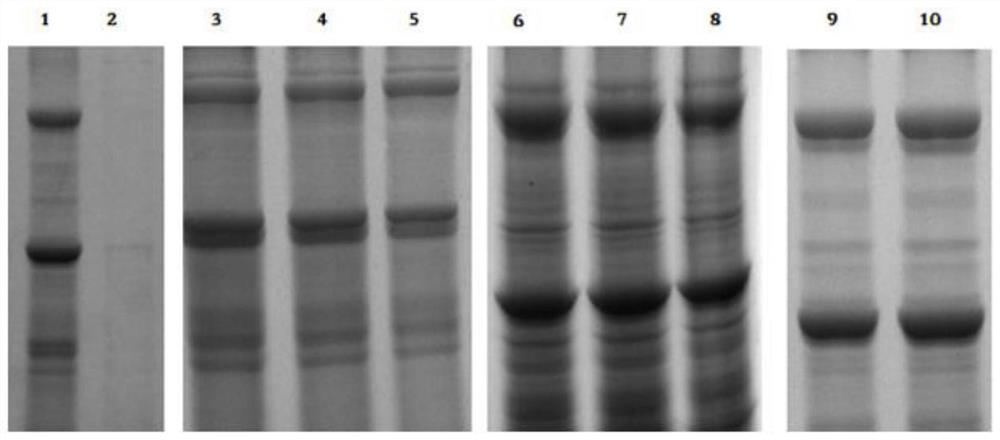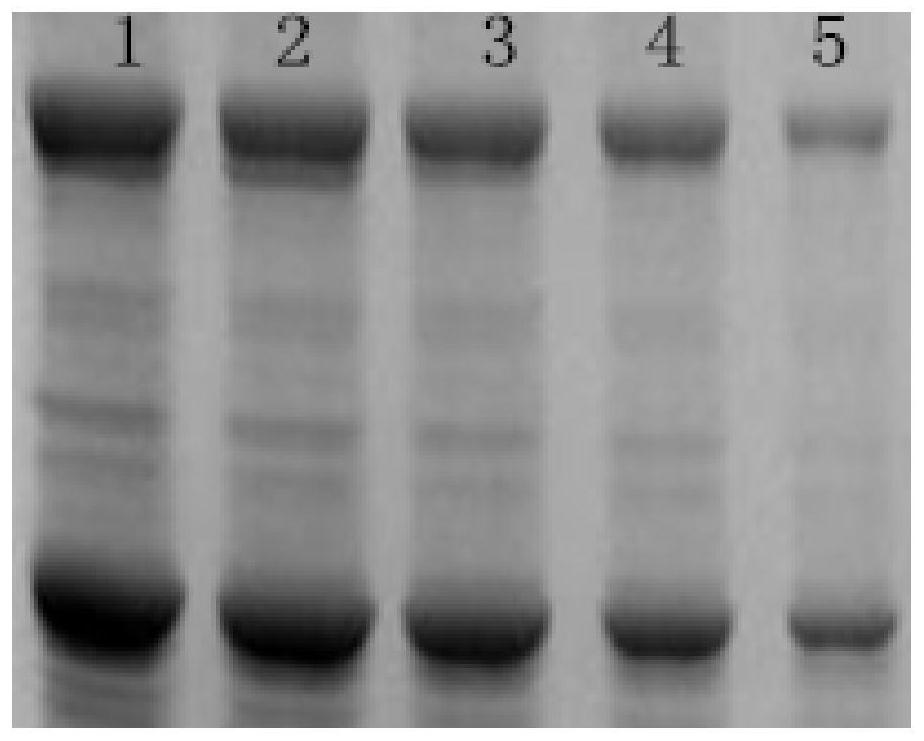A quantitative detection method for Bacillus thuringiensis subsp. israeli toxin protein
A quantitative detection method, the technology of Bacillus thuringiensis, applied in the field of quantitative detection of toxin protein, can solve the problems of low Bti toxin protein content and inability to accurately quantify Bti toxin protein, and achieve high accuracy of detection results, low cost and accurate results Effect
- Summary
- Abstract
- Description
- Claims
- Application Information
AI Technical Summary
Problems solved by technology
Method used
Image
Examples
Embodiment 1
[0021] Method summary: The raw powder of Bacillus thuringiensis subsp. , followed by SDS-PAGE to separate the toxin protein from other miscellaneous proteins according to the difference in the relative molecular mass of the protein, and finally scan the protein region with an electrophoretic image scanner, and quantify it according to the intensity value of the protein band region.
[0022] 1. Reagents and solutions
[0023] Tetramethylethylenediamine (TEMED).
[0024] 0.55mol / L sodium hydroxide solution: Weigh 2.2g of sodium hydroxide and dilute to 100mL with water.
[0025] 10% ammonium persulfate solution (10% AP): Weigh 0.1 g of ammonium persulfate and dilute to 1 mL with water.
[0026] 10% sodium dodecyl sulfate solution (10% SDS): Weigh 10.0 g of sodium dodecyl sulfate and dilute to 100 mL with water.
[0027] 0.1mol / L phosphate buffer solution (pH8.0): Weigh 1.77g of anhydrous potassium dihydrogen phosphate into a beaker, add 6mL of 0.1mol / L anhydrous potassium dihy...
Embodiment 2
[0064] 1. Explore the method of eliminating interfering substances in Bti samples
[0065] The sugars, flocculants and other substances in the Bti sample interfered with the formation of the toxin protein-SDS micelles. As the sampling amount of the Bti sample increased, the interfering substances also gradually increased. When a certain amount was reached, the toxin protein-SDS micelles It cannot be formed at all, resulting in a blank protein band phenomenon, resulting in the inability to detect the toxin protein in the Bti sample. Therefore, it is first necessary to remove the interfering substances in the Bti sample in order to accurately quantify the toxin protein in the Bti sample.
PUM
 Login to View More
Login to View More Abstract
Description
Claims
Application Information
 Login to View More
Login to View More - R&D
- Intellectual Property
- Life Sciences
- Materials
- Tech Scout
- Unparalleled Data Quality
- Higher Quality Content
- 60% Fewer Hallucinations
Browse by: Latest US Patents, China's latest patents, Technical Efficacy Thesaurus, Application Domain, Technology Topic, Popular Technical Reports.
© 2025 PatSnap. All rights reserved.Legal|Privacy policy|Modern Slavery Act Transparency Statement|Sitemap|About US| Contact US: help@patsnap.com



